Campaigners criticise 'weak' EU safeguards against conflict minerals


A law proposed by the European Commission on responsible sourcing of minerals is not strong enough to prevent European companies from effectively financing conflict or human rights abuses, campaigners maintain.
The Commission has recently announced voluntary measures that will only apply to companies importing processed and unprocessed minerals into the European market.
The proposal covers companies involved in the lucrative gold, tin, tantalum and tungsten sectors. Campaigners, including Christian Aid, Pax Global Witness and Amnesty International, are warning that the proposal – an opt-in self-certification scheme available to a limited number of companies – is likely to have minimal impact on the way that the majority of European companies source their natural resources.
Sophia Pickles from Global Witness commented: “The proposal is tantamount to the EU saying that it’s ok for companies to choose not to behave responsibly. This risks undermining the duty states have to protect human rights, which is well-established under international law.”
Legislation introduced in the US in 2010 that requires US-listed companies to do checks on minerals coming from the Democratic Republic of Congo and neighbouring countries, has already prompted changes in the way that companies do business.
Campaigners are warning that without a clear EU law that requires companies to do due diligence and report publicly on it, the European Commission will fail to bring EU companies up to the same responsible sourcing standards as their American competitors.
Picture credit: © Prasetyo Perdana | Dreamstime.com
????
Smarter Energy: Zero-Down Financing For Intelligent Power Storage
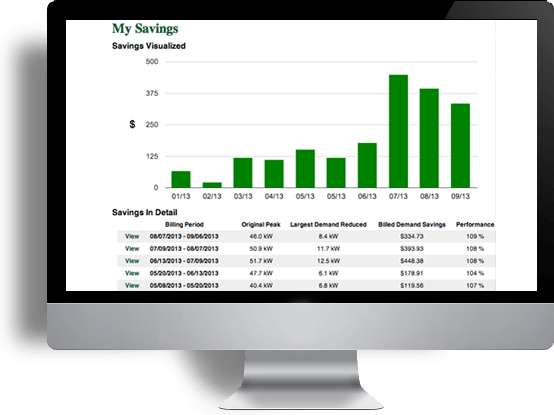

For commercial, industrial and municipal power consumers, intelligent energy storage, coupled with demand response, is emerging as an economically viable means of realizing gains in energy efficiency and paring down electric utility bills. That, in turn, may have much broader social and environmental ramifications and positive outcomes, spurring smart grid development and more widespread adoption of distributed solar, other forms of renewable energy generation and electric vehicles (EVs). And that could well lead to realizing big reductions in carbon and greenhouse gas emissions, as well as other pollutants that result from generating electricity by burning fossil fuels.
An initial group of intelligent energy storage-demand response startups is beginning to make some waves in the U.S. power industry. Nurtured by federal funds and private-sector venture capital, they are now being given a boost by state government initiatives such as California's AB 2514, “Procurement Targets for Viable and Cost-Effective Energy Storage Systems.”
Intelligent energy storage startups, such as Green Charge Networks (GCN), are also taking a page out of the residential solar playbook. Last week, independent equipment finance and asset management company TIP Capital and GCN announced the creation of the first fund of its kind: a $10 million TIE fund that will enable GCN to offer its commercial, industrial and municipal customers zero-money down financing to deploy its GreenStation smart energy storage-demand response and reduction platform.
Creative financing for power efficiency projects
Founded in 2009 with $12 million in grant funding from the Department of Energy (DOE) via the American Recovery & Reinvestment Act (ARRA), Santa Clara, Calif.-based GCN has been moving quickly from bleeding to leading edge.
With more than three years of real-world data and field testing under its belt, the Santa Clara-based power, as opposed to energy, efficiency specialist is ready to scale up commercially, GCN founder and CEO Vic Shao recently told Triple Pundit in an interview. Having signed 1.5 megawatts (MW) worth of Power Efficiency Agreements (PEAs) with customers, Shao and his team have their sights set on raising that to 5 MW by year-end.
An energy efficiency financing pioneer, Bloomfield Hills, Mich.-based TIP Capital has been providing creative, cash flow-positive financing for a variety of energy efficiency projects – EV fleets, building lighting and others – across a growing range of commercial, industrial and municipal customers. Company management sees enough in GCN's early track record to commit $10 million to establish a fund dedicated to providing a zero-dollars-down smart energy storage financing option for new commercial, industrial and municipal GCN customers.
As TIP Capital's VP of National Accounts Ross Reida was quoted:
“With Green Charge Networks’ savings track record for their customers and pipeline of deals, TIP Capital is excited to be partnered with GCN. Our flexible programs will allow GCN’s customers to pay $0 down, provide energy savings above what they pay, and protect against rising demand charges.”
Added GCN CFO Brian Asparro:
“For buildings to be more power efficient and to optimize the potential for environment benefits, intelligent energy storage must be financially affordable and accessible for business owners. Commercial buildings account for 18% of US CO2 emissions. Through GCN’s GreenStation, building owners can save 15% or more on their electric bills.”
Distributed energy: Cleaner, greener and more affordable
GCN is one of a pioneering set of aspiring U.S. power industry players focused on intelligent energy storage and demand response as a means of forging a cleaner, greener U.S. energy infrastructure for this and generations to come.
GE Ventures and Spain's Iberdrola were among those investing $15 million in a Series B round of venture capital financing for a smart energy storage solutions provider, Millbrae, Calif.-based Stem, last December.
Enacting groundbreaking state mandates and incentives for renewable energy, smart grid and now energy efficiency, California and New York have been the focal points for GCN, Stem and other smart energy storage-demand response system startups up to this point. Intelligent Generation (IG), on the other hand, sees loads of promise (pardon the pun) in the U.S. heartland.
Applying its energy storage and demand management algorithms across a fleet of assets dispersed commercial customer sites making use of solar PV systems in the western end of the PJM Interconnection power market, IG is able to optimize savings and returns. With 10 MW of projects in its pipeline, management sees an abundance of opportunities just in the Chicago metropolitan area alone, much less PJM's entire service territory.
While its GreenStation platform can be an integral, value-added facet of a distributed energy platform that includes solar photovoltaic (PV) arrays and EVs, the economics of smart energy storage have improved rapidly enough to justify investing in such systems on a stand-alone basis, particularly in power markets where commercial, industrial and municipal customers are subject to high demand charges.
While TIP Capital and GCN generally project 15 percent returns on investment for customers installing the GCN GreenStation, they could be substantially higher. As GCN's Shao explained:
“The returns are absolutely incredible when you factor in all these rebates and tax credits and so forth. Some really super attractive situations have ROIs in the 1.5 to 2.5 year range, about 25 percent of our deal flow.
“The electricity bill savings realized by customers in Con Ed territory in New York can pay back their investment in GCN’s GreenStation in as little as 1.5 to 2.5 years. The story is similar in California.”
Images courtesy of Green Charge Networks
New "EPA" Report Trashes LEED Standards... No, Really!

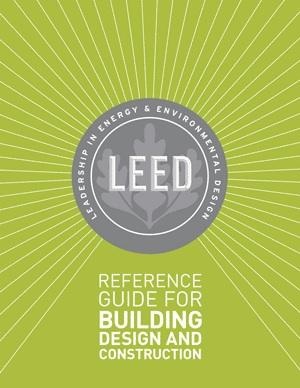
When the EPA releases a research report claiming that LEED-certified buildings don't perform as well as their non-certified counterparts, that's bound to turn heads in at least some sectors of the blogosphere so consider this mission accomplished. Last Friday, a group called the Environmental Policy Alliance (EPA, what else?) released a bombshell report claiming that LEED (Leadership in Environmental Engineering and Design) certified buildings "actually use more energy than uncertified buildings." The report has been making waves around the tubes all week long.
That's all well and good if you're only interested in culling information from their press release. However, if you are interested in whether the Environmental Policy Alliance is an organization with a solid track record in research or if it's just another one of those PR efforts masquerading as a think tank, you can follow the links to their website and your answers are right there.
The Environmental Policy Alliance LEED "report"
Here's one clue: The Environmental Policy Alliance home page includes no obvious links to their contact information, history, staff, board of directors, supporters in academic or trade organizations, or any other information about itself. Maybe we missed something (and if so, please send a link in the comment thread), but usually that information is pretty easy to find when you're dealing with a professional organization.
Another clue on the Environmental Policy Alliance home page is a line identifying the group as "a project of the Center for Organizational Research and Education," an organization for which no easily discoverable website exists. If you can find it, drop a link in the comment thread and let us know how you found it.
The big clue, though, is the group of three reports Environmental Policy Alliance touts on its home page. The new report, "LEED Exposed," is one of them. The other two are "Green Decoys" and "EPA Facts" (the latter referring to the U.S. Environmental Protection Agency).
The "Green Decoys" report is the one we're most interested in. Under the headline, "Quacks like a duck: corporate shill Richard Berman Launches 'Green Decoys' attack report," our friends over at Minnesota's Bluestem Prairie reference some information dug up by Citizens for Responsibility and Ethics in Washington (CREW) about Mr. Berman's company, the aptly named Berman & Co.
The churning out of research reports with dubious qualifications has become something of an annual ritual for Berman & Co. Going by Bluestem's timeline, "LEED Exposed" follows shortly after the release of "Green Decoys," which launched at the end of January. Here's some background information from CREW's "Berman Exposed" website:
Through his public affairs firm, Berman & Co., Berman has fought unions, Mothers Against Drunk Driving, PETA and other watchdog groups in their efforts to raise awareness about obesity, the minimum wage, the dangers of smoking, mad cow disease, drunk driving, and other causes. Berman runs at least 23 industry-funded front groups and projects, such as the Center for Union Facts and holds 24 'positions' in those organizations.
It's well worth taking a look at the CREW list for Berman & Co.'s creative use of names for lobbying efforts that directly undercut the work of established organizations, including CSPI Scam, Sunlight Scam, Peta Kills Animals and Rotten Acorn.
"Green Decoys" is aimed squarely and unashamedly at undercutting the wildlife preservation group Trout Unlimited. That's also the general idea behind the attack on LEED standards, which have garnered broad support in the building trades as well as environmental organizations.
LEED standards have also gained a huge following among non-building corporations as part of their environmental marketing strategy, one prominent example being the Marriott hospitality company, so it looks like Berman & Co. is aiming at a wide target.
As for the LEED Exposed "report" itself, National Review Online is one of the sites that got suckered into covering it as a legitimate piece of research, under the snarky headline "Green Building Certification program LEEDs from behind."
However, reporter Jillian Kay Melchior did a creditable job of turning the spotlight around with a nice quote from U.S. Green Building Council Senior Vice President Scot Horst, who explained that the report was based on an energy metric that skews in favor of empty buildings.
What's next for Berman & Co.
Up to now Berman has been flying under the Triple Pundit radar, but with the release of three new environment-related "reports" it seems that we have some catching up to do on this company, so stay tuned.
Image courtesy of the U.S. Green Building Council
Illinois Clean Energy Report Shows the Power of Community Choice


The tubes have been buzzing over a new report announcing that 91 Illinois communities now get 100 percent of their electricity from renewable sources, but that's just the tip of a very large iceberg. According to the report, "Leading from the Middle," more than 500 other communities in the state have signed on to the same community choice program that the "clean 91" have used, and several have already begun using it to improve their electricity footprint.
Within that larger group is Chicago, which is highlighted in the report. Though it still relies heavily on natural gas, Chicago has already used community choice to get from 40 percent coal down to zero in practically the blink of an eye.
As for how that is possible, let's take a remark by Chicago's chief sustainability officer, Karen Weigert, who sums it all up in "Leading from the Middle" with this comment: "[Electricity] is a market, and when you ask a market for something, they can provide it."
Leading the Illinois clean energy revolution
The full title of the report is "Leading from the Middle: How Illinois Communities Unleashed Renewable Energy." It's a project of the Environmental Law & Policy Center, Sierra Club, World Wildlife Fund, LEAN Energy U.S., the Illinois Solar Energy Association, and George Washington University Solar Institute.
The report describes how Illinois communities are using renewable energy credits to get renewably-sourced electricity under a 2009 state law that established a Community Choice Aggregation (CCA) program in Illinois.
Basically, the new law enables local communities to combine their electricity consumers including residents, businesses, and institutions. With a unified bulk consumer, purchasing power skyrockets and communities that prioritize clean energy have enough leverage to get it.
That experience is amply illustrated by Chicago. As described in the report, Chicago officials came up with a plan to eliminate coal from the city's mix and include more wind power, specifically from Illinois wind farms.
The initial response from the energy supplier, Integrys Energy Services, basically came down to, "No," but Chicago's 900,000-strong aggregated customers provided the supplier with a strong motivation to find a way to work with the city.
The result was a 27-month contract for 5 million MWh (megawatt hours) for Chicago's residential and small business customers, with natural gas replacing coal, helped along by the inclusion of more in-state wind power.
For the record, many in the environmental community aren't fans of natural gas (fracking impacts and fugitive emissions being two key issues), but the contract does stipulate high efficiency, combined-cycle natural gas plants rather than conventional gas power plants, which are much less efficient. It's also helpful to keep in mind that getting off coal was a critical public health issue for Chicago.
Getting the most out of CCA
At only 55 pages, the "Lead from the Middle" report is well worth reading in full, but for those of you in a hurry the most interesting part is probably its recommendations for getting the greatest benefits out of a CCA program. These are:
- Request a carve-out for local or regional clean energy projects that contribute to job creation. An alternative route is to use renewable energy credits to develop a renewable energy project and have the electricity supplier include that project in its plan.
- Relatedly, use community bonding authority to develop local renewable energy projects. That can be accomplished by setting up a dedicated fund, bundling rooftop solar installations or combining a new project with brownfields reclamation.
- Require "power content labeling" that enables local communities to identify what kind of power they are buying and where it is coming from.
- Use renewable energy credits to offset "brown power," giving preference to in-state or border state projects in order to maximize regional public health and environmental benefits.
Clean energy is the new normal
"Lead from the Middle" was announced from Normal, Ill., which is one of the 100 percent clean energy towns. That led to a bit of unintentional wordplay from U.S. Senator Dick Durbin (D-IL), who lent this comment to the announcement:
Normal is showing how communities can help move our country toward a more sustainable future from the local level. Along with other communities up and down Illinois, this city is cutting down both its utility bills and its environmental footprint by pursuing renewable electricity. I hope other states take notice of the good work being done here in Normal and all across Illinois.
The new normal of clean energy can't come too soon for communities in North Carolina, West Virginia and other states continue to deal with the devastating fallout from fossil fuel dependency.
Image: Chicago at night by Mike Miley
Distill Those Used Plastic Shopping Bags for Fuel


Researchers at the University of Illinois have developed a way to make those ubiquitous plastic shopping bags that litter both land and seascapes useful -- by converting them into diesel, natural gas and other petroleum products.
According to a ScienceDaily article, the conversion “produces significantly more energy than it requires and results in transportation fuels -- diesel, for example -- that can be blended with existing ultra-low-sulfur diesels and biodiesels.” Other products, such as natural gas, naphtha (a solvent), gasoline, waxes and lubricating oils such as engine oil and hydraulic oil also can be obtained from shopping bags, researchers said.
A report about the study was published last month in the academic journal Fuel Processing Technology. The process involves heating the bags in an oxygen-free chamber, a process called pyrolysis, said Brajendra Kumar Sharma, a senior research scientist at the Illinois Sustainable Technology Center, who led the research and is quoted in the ScienceDaily article.
"You can get only 50 to 55 percent fuel from the distillation of petroleum crude oil," Sharma said. "But since this plastic is made from petroleum in the first place, we can recover almost 80 percent fuel from it through distillation."
Americans discard about 100 billion plastic shopping bags each year, according to the Worldwatch Institute, and only about 13 percent of them are recycled. The rest end up in landfills or escape to the wild, blowing across the landscape and entering waterways. Plastic bags also comprise a big chunk of the plastic debris in giant ocean garbage patches that kill wildlife and litter beaches.
Plastic bags "have been detected as far north and south as the poles," the researchers wrote. "Over a period of time, this material starts breaking into tiny pieces, and is ingested along with plankton by aquatic animals," Sharma noted. Fish, birds, ocean mammals and other creatures have been found with a lot of plastic particles in their guts. Whole shopping bags also threaten wildlife, Sharma said.
"Turtles, for example, think that the plastic grocery bags are jellyfish, and they try to eat them," he said. Other creatures become entangled in the bags.
Previous studies have used pyrolysis to convert plastic bags into crude oil. Sharma's team took the research further by “fractionating” the crude oil into different petroleum products and testing the diesel fractions to see if they complied with national standards for ultra-low-sulfur diesel and biodiesel fuels.
"A mixture of two distillate fractions, providing an equivalent of U.S. diesel #2, met all of the specifications" required of other diesel fuels in use today -- after the addition of an antioxidant, Sharma said. "This diesel mixture had an equivalent energy content, a higher cetane number [a measure of the combustion quality of diesel requiring compression ignition] and better lubricity than ultra-low-sulfur diesel."
The researchers were able to blend up to 30 percent of their plastic-derived diesel into regular diesel, "and found no compatibility problems with biodiesel," Sharma said. "It's perfect," he added. "We can just use it as a drop-in fuel in the ultra-low-sulfur diesel without the need for any changes."
It makes sense: Plastics bags are a petroleum-based product, and the bonus is that the conversion process produces significantly more energy than it requires. Thanks to science, it’s a win-win: Energy from trash is the way to go because we’re really good at producing a whole lot of trash.
Image: Plastic bags by plasticbags2 via Flickr cc
Natural Food Expo: Consumers Demand Healthy Convenience


The food industry’s revenue growth is now being driven by a consumer mega-shift from fast foods to healthy convenience food. This trend has catapulted Chipotle’s stock to more than $500 per share. It is reshaping your local 7-Eleven convenience store that now offers healthier food featuring freshly made sandwiches and fruits. And this consumer mega-shift is why the sale of the Coca-Cola Co.’s iconic sugary drinks are falling. Positive evidence on the health implications of Americans adopting a better diet is now surfacing with an encouraging report that the rate of diabetes for our youth is falling.
Natural Food Expo attendance explosion
I have been attending the Natural Food Expo West for years. It used to be a niche event held in a modest facility. The 2014 Expo was one of the most heavily attended events I have ever attended across industries (rivaling the solar industry for its attendance growth over the last few years). Healthy food vendors now fill several floors of the huge Anaheim Convention Center. The line to secure an attendance badge involved hundreds of people, stretched the length of the center’s main hall and remained that way for much of the morning. Healthy food has leaped from a marketing niche to a revenue growth engine for the food service industry.
Price plus depressed income levels restrain sales growth
Market research points to 64 percent of consumers buying green products. One out of five consumers buy mostly green products. Another four out of 10 buy a mix of green and traditional products. Less than two out of every 10 consumers are “unconcerned” and buy products without regard to long-term health impacts or environmental consequences.
Price and income level are the economic headwinds confronting a massive shift toward healthier and more sustainable consumer procurement. In today’s economy, 90 percent of consumers have not seen real income growth for more than 15 years. The pressure to balance household budgets and the higher price often associated with buying healthier food is the lid that is keeping this boiling pot of consumer demand for healthier diets from rapidly disrupting the food industry.
Three keys to winning the healthy convenience customer
Consumers are very clear on the three criteria they use in deciding if a food, and food companies, align with their expectations on health and sustainability. These three criteria are a “must have” for winning customers:
- Transparency. No secrets. No hype. Consumers want understandable and quick evidence that your company is acting in a responsible manner. Consumers are reading food product labels. They expect them to be easy to locate on a package and to be readable. They are scanning labels for any ingredient they do not understand, recognize or that sounds like it is an artificial chemical. They want to know if the food is fresh and local. They want evidence that the food was farmed or caught in a responsible manner. If your food service business fails to satisfy these consumer expectations then think “pink slime.” This could happen to you. Now envision Chipotle’s food sourcing and preparation. It is right out front for the customer to understand and align with. It is a major reason for Chipotle’s sales success.
- Choice. Making healthy food choices are now the norm for moms and the millennial generation. Offering “moo” milk is no longer enough. Consumers seek choices that include soy, almond and rice milk. Even though a small fraction of consumers are intolerant to gluten, almost 30 percent buy gluten-free products. The millennial generation is the most diverse generation in U.S. history. They seek variety in what they eat. And they seek choice in when they eat. For example, limiting breakfast to morning hours and offering limited healthy choices is a recipe for losing sales with millennials that expect choices on what they buy and when they buy it.
- Organic and Non-GMO. Organic food sales growth has again returned to an annual 10 percent growth rate. This sales growth rate is double that of any other food category. This trend will accelerate from the growing consumer uncertainty on the health implications tied to genetically modified organisms and as consumers come to understand that by definition an organic food is also non-GMO.
Authenticity drives food branding
The clearest marketing trend emerging from the consumer shift toward healthy convenience foods is the role authenticity now plays in defining a company’s brand alignment with customers. Customer questions on authenticity are at the core of McDonald’s stagnant revenues as it continues to price-promote food items like Big Macs while also trying to market healthier food choices. Similar mixed authenticity messaging explains why the Coca-Cola Co. is facing declining revenues even as it aggressively grows its healthier product offerings.
Stepping into this marketing opportunity are restaurants and caterers that have adopted a culture of authenticity built upon farm-to-fork menus, adoption of energy-efficient kitchens and lighting plus commitments to recycling and composting. Authenticity built upon sustainability is now the food industry’s marketing path for winning customers and growing product revenues while it also increases profit margins through green supply chain management best practices and energy efficiency.
Image credit: Bill Roth
Bill Roth is an economist and the Founder of Earth 2017. He coaches business owners and leaders on proven best practices in pricing, marketing and operations that make money and create a positive difference. His book, The Secret Green Sauce, profiles business case studies of pioneering best practices that are proven to win customers and grow product revenues. Follow him on Twitter: @earth2017
Teaching to the Future: A Design School Where Nature is Always the Client
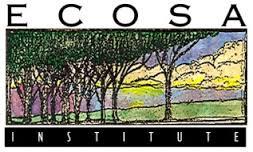

By Antony Brown
Design is a magical profession that creates our reality through a mysterious process of visualization and imagination called creativity. The design process gives shape to everything that surrounds us and, in turn, that reality shapes the way we perceive the world. Like all powerful magic, the practice of design carries with it a profound responsibility. Every object created by design, be it product, building or metropolis, has a powerful impact on us and the environment.
As soon as this latent power of design is understood, what becomes disturbing is the superficiality of most design education. Too often design professionals are educated in an environmental and spiritual vacuum. Learning is structured in an Descartian abstract reality full of style and empty of substance with little connection to the underlying reality of the world.
With the accelerating deterioration of the natural environment, it is essential to educate designers that are skilled in finding solutions that enhance our planetary ecology rather than consume it. We are fast becoming a beleaguered species whose survival is by no means secure. Environmental problems continue to burgeon and the real impact climate change is still yet to be fully felt.
Designers are not educated to solve the ecological challenges we face, yet design is a problem-solving skill that is ideally suited to proposing solutions to environmental, social and even economic challenges. But without a deeper design education that addresses these broader issues, design will continue to pursue style over substance.
How can designers be educated to design for the environment? How can they use the power of their design skills to create a world that brings balance back into our lives? Is it possible to balance the needs of the natural world with those of human populations?
Training the next generation of ecological designers
To train ecological designers, a skill far more advanced than sustainable or green design, we must develop in students a real sense of the natural environment. A professional who designs for the well-being of the environment must have a deep understanding of the systems they affect and a profound sensitivity to the natural world. How can a designer surrounded by an urban world, created for and by a single species, be expected to care or know about the environment? We may understand it in an abstract, scientific way, but we must give a foundation of knowledge about the environment that is expanded to include a spiritual awareness of what we do when we tear up land to create our houses, cities, solid waste dumps, sewage treatment plants and supermarkets.
Ecological designers need to understand the complexity and interconnectedness of the world’s systems and the utter dependence we humans have on the natural world and its services. Without them we are well on the road to extinction. We need to move to experience and engagement rather than theory and detachment. We tend to educate students from the neck up, ignoring data showing how our minds and bodies are a connected whole. We are a seamless part of the natural world, and research shows that for our health we need community, nature and a sense of purpose -- not just a way of “making a living." We need to move from abstraction to commitment and search for values deeper than a “lifestyle."
Nature has been testing systems for million of years. Complexity, diversity and co-evolving systems are the names of the game in the natural environment, yet designers are not trained to understand this model. Perhaps the first and most fundamental aspect of a design education must be to move to a holistic understanding of these design processes. This was one of the goals laid out in 1998 with the founding of the Ecosa Design Institute. The idea was that, with a different approach to education, designers can regenerate, restore and repair our environments and therefore heal the world. We must make nature and natural systems the model as we strive to make connections between what we imagine and the reality we create. We must strip away the shell that separates us physically and emotionally from the natural world. Our understanding of the environment must move from a theoretical to a visceral level that includes experience as well as data.
Design for the future
We need to develop a deep commitment to the health of the world. This may be the key measurement of a successful design -- a more empirical way of measuring the designer’s impact. Does the design encourage community, not in the abstract Facebook version, but in the everyday world? Does it reduce the health problems so prevalent in our urban societies? Does it encourage the blending of natural and human systems? Does the design increase the mental and physical health of the human and natural environment?
We need to educate designers who can not only create physical environments or products, but can also visualize a new, better kind of society. Since the failure of the modernist architectural movement, the concept of the designer or architect as social prophet is in disrepute, yet I believe it still has power. For the modernists, it was not understanding human psychology in the underlying philosophy that was wrong. We now build our own environments, and they affect us just as profoundly as the natural environment did when it evolved our ancestors. This makes designers shapers of our collective future.
Moving beyond "green"
"Green Design" has become a fashionable topic in the design arts. There is a growing sense that the designer has a key role in solving many of the acute and complex environmental problems facing our society. Design professionals have begun to address the issues through seminars and workshops purporting to give the secret to successful “green design." Plugging in solar panels and designing with recycled materials are just technological fixes, not ecological design. Designing for the environment exists as much in the heart as in the head, and here lies the problematical issue: How should these skills be taught? Will “green design” be yet another trendy exercise in planned obsolescence or a fundamental shift in our attitudes? Like all slogans based on its ability to fit on a bumper sticker, “green” or “sustainable” by their very broadness can mean whatever anyone wants them to mean.
One of the most important tasks is to regenerate a spiritual element to the design of the world. The designer must amplify our collective sensitivity to the overall design of the planet, the interaction of its systems and the delicacy of its balance. We all must examine the wisdom of those who lived in times when a true connection with the Earth existed. We, in our western scientific paradigm, have jettisoned the more subtle spiritual and philosophic systems in the mistaken belief that we can impose our will on the environment with no consequences.
Without a comprehensive approach to the design of human environments, development will continue to spread across the planet. From the design of the homes we live in to the design of the furniture and products that fill them, from the form our cities take to the packaging of products, design has a pervasive impact on all of our lives.
To accomplish change we cannot keep teaching the same traditional design curriculum. We need a new model. The Ecosa Design Institute was founded to become that model and emphasizes the role of design in solving environmental, social and economic problems created by the needs of a growing, increasingly urbanized, global population. Its curriculum develops from the underlying evolutionary processes of nature – complexity and adaptive systems. This concept allows design to evolve from the flows, pressures and impulses that constitute its surrounding environment. This new model for design education is essential if we are to achieve a new vision for our future. Otherwise we are condemning ourselves to the dystopian future of Blade Runner, or worse.
Image credit: Ecosa Institute
Antony Brown is Founder and Director of the Ecosa Design Institute, a Sponsored Program of Prescott College.
A Carbon Tax to Rule Them All
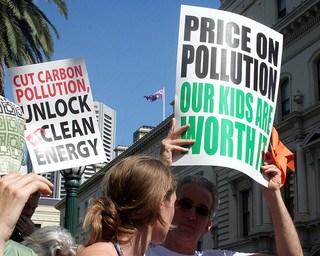

By Brendon Steele
Here’s the beginning of a joke: Citizens Climate Lobby, ExxonMobil, climate scientist James Hansen, and a conservative Heartland Institute spin-off walk into a bar. No, a bar fight doesn’t erupt. Instead, what do they agree on when they walk out?
Not many realize, but they already agree on a carbon tax shift.
Put simply, a tax shift means to cut one tax and replace it with another—such as to cut income and/or payroll taxes, and put a carbon price in their place. This is called a “tax swap” or “revenue neutrality.”
Former NASA scientist James Hansen, the godfather of climate advocacy, has long thought this is a great idea. He argues a carbon tax is the most efficient and effective way to shrink our greenhouse gas emissions, and by refunding the tax instead of just adding it on top, it protects people—and the poor—while keeping government’s “hands off money.”
ExxonMobil—the largest oil refiner in the world—thinks it’s a good business decision, stating on its website: “It is rare that a business lends its support to new taxes. But in this case, given the risk-management challenges we face and the policy alternatives under consideration, it is our judgment that a carbon tax is a preferred course of public policy action versus cap-and-trade approaches.” ExxonMobil advocates revenue neutrality to protect vulnerable populations and spur investments in innovation.
ExxonMobil’s seeming nemesis, Citizens Climate Lobby (CCL), is in complete agreement. A grassroots advocacy nonprofit, CCL trains volunteers to reclaim their democracy and engage elected officials on climate action. It makes clear: “Academic papers studying a carbon tax indicate that a carbon tax with 100 percent revenue recycling can boost the economy, even before considering the economic benefits from improved health and less severe climate impacts. Thus, CCL has chosen to advocate for a policy that will restore the climate and boost the economy.”
Finally, not many people would expect the Heartland Institute—long derided by climate advocates as the quintessential “climate denier”—to put its name anywhere near a carbon tax of any stripe. And it doesn’t. But Heartland’s former Center on Finance, Insurance and Real Estate, which spun-off in 2012 to form its own free-market group, does.
That group, the R Street Institute, has been shaking up the Washington, D.C. policy scene since it formed. R Street passionately believes in small government and the free market, and it went head-to-head with its progenitor on stage in a public debate over a carbon tax. At the end, in a room of 200 conservatives and libertarians, roughly 80 percent stood up to affirm that there is a strong conservative case for a revenue-neutral carbon tax.
Why do so many different types of stakeholders support a carbon tax shift?
Although from very different backgrounds, many within these groups recognize that a carbon tax shift can drive forward something our society needs: prosperity and innovation. That’s because right now taxes are collected on our income, or in other words, our prosperity—what we tax hurts our growth. Shifting taxes from income to pollution stops penalizing our prosperity and starts encouraging sustainable growth.
A simple and clear price on carbon is also the best signal to the economy to do more with less energy—that is, to be productive and to innovate. Innovation (not stimulus) creates value, which leads to lasting economic prosperity. This economic signal to innovate is not driven to nearly the same degree by other policy options or by regulations.
Furthermore, a tax shift’s revenue-neutrality means people—not the government—have the individual freedom to choose how to best spend their income, to benefit themselves and their families. This will produce even more social benefits as people choose options that drive down emissions and drive up productivity, leaving them with more money at the end of the day.
Conservative economist Gregory Mankiw, who advised former President George W. Bush, sums it up: “If the government charged a fee for each emission of carbon, that fee would be built into the prices of products and lifestyles. When making everyday decisions, people would naturally look at the prices they face and, in effect, take into account the global impact of their choices.”
In pursuing our work at Future 500, we’ve seen that the ideas above resonate across the ideological spectrum. As stakeholder engagement experts, it’s our mission to reach out to often polarized groups, and, more importantly, to build alliances across groups that love to hate each other: Rush Limbaugh conservatives, Michael Moore progressives, Ron Paul libertarians and just-get-it-done corporate executives.
We engage stakeholders across these common divides to advance systemic, market-based solutions to some of our greatest challenges. Even amidst pitched partisan battles, innovation-positive solutions—like a carbon tax shift—point to closing the bitter divide between businesses and environmentalists, right and left. We fervently believe that building bridges to find unlikely allies is a needed step to advance a sustainable world.
Image credit: Flickr/Takver
Brendon Steele is a Stakeholder Engagement Manager at Future 500, a global nonprofit specializing in stakeholder engagement and building bridges between parties at odds to advance systemic solutions to urgent sustainability challenges.
Four new man-made gases found in atmosphere


Scientists at the University of East Anglia (UEA) have identified four new man-made gases in the atmosphere – all of which are contributing to the destruction of the ozone layer, they maintain.
New research published in the journal Nature Geoscience reveals that more than 74,000 tonnes of three new chlorofluorocarbons (CFCs) and one new hydrochlorofluorocarbon (HCFC) have been released into the atmosphere.
Scientists made the discovery by comparing today’s air samples with air trapped in polar firn snow – which provides a century-old natural archive of the atmosphere. They also looked at air collected between 1978 and 2012 in unpolluted Tasmania.
Measurements show that all four new gases have been released into the atmosphere recently – and that two are significantly accumulating.
Lead researcher Dr Johannes Laube from UEA’s School of Environmental Sciences commented: “Our research has shown four gases that were not around in the atmosphere at all until the 1960s which suggests they are man-made.
"CFCs are the main cause of the hole in the ozone layer over Antarctica. Laws to reduce and phase out CFCs came into force in 1989, followed by a total ban in 2010. This has resulted in successfully reducing the production of many of these compounds on a global scale. However, legislation loopholes still allow some usage for exempted purposes."
Laube added that the source of the new gases is not yet known and “should be investigated”. He indicated possible sources as being feedstock chemicals for insecticide production and solvents for cleaning electronic components.
Picture credit: © Todd Tremblett | Dreamstime Stock Photos
Gap Inc.'s P.A.C.E. Program Empowers Women on the Factory Floor
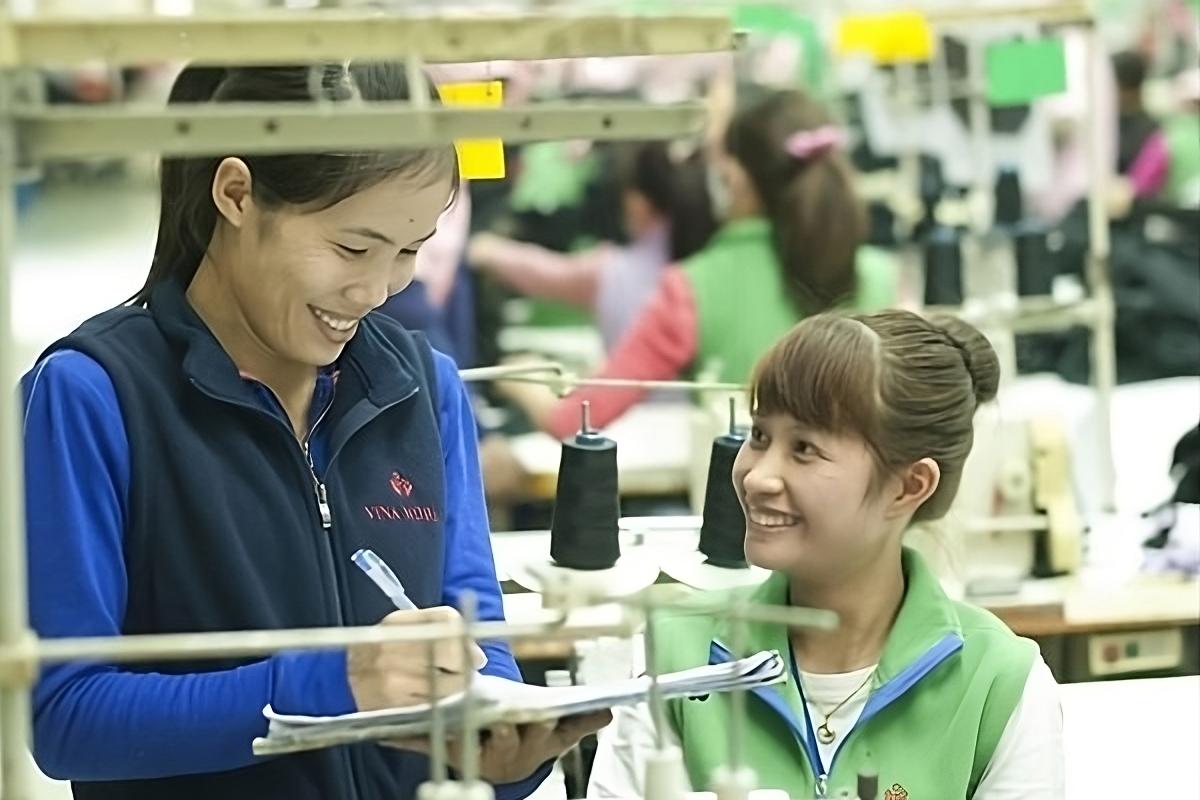
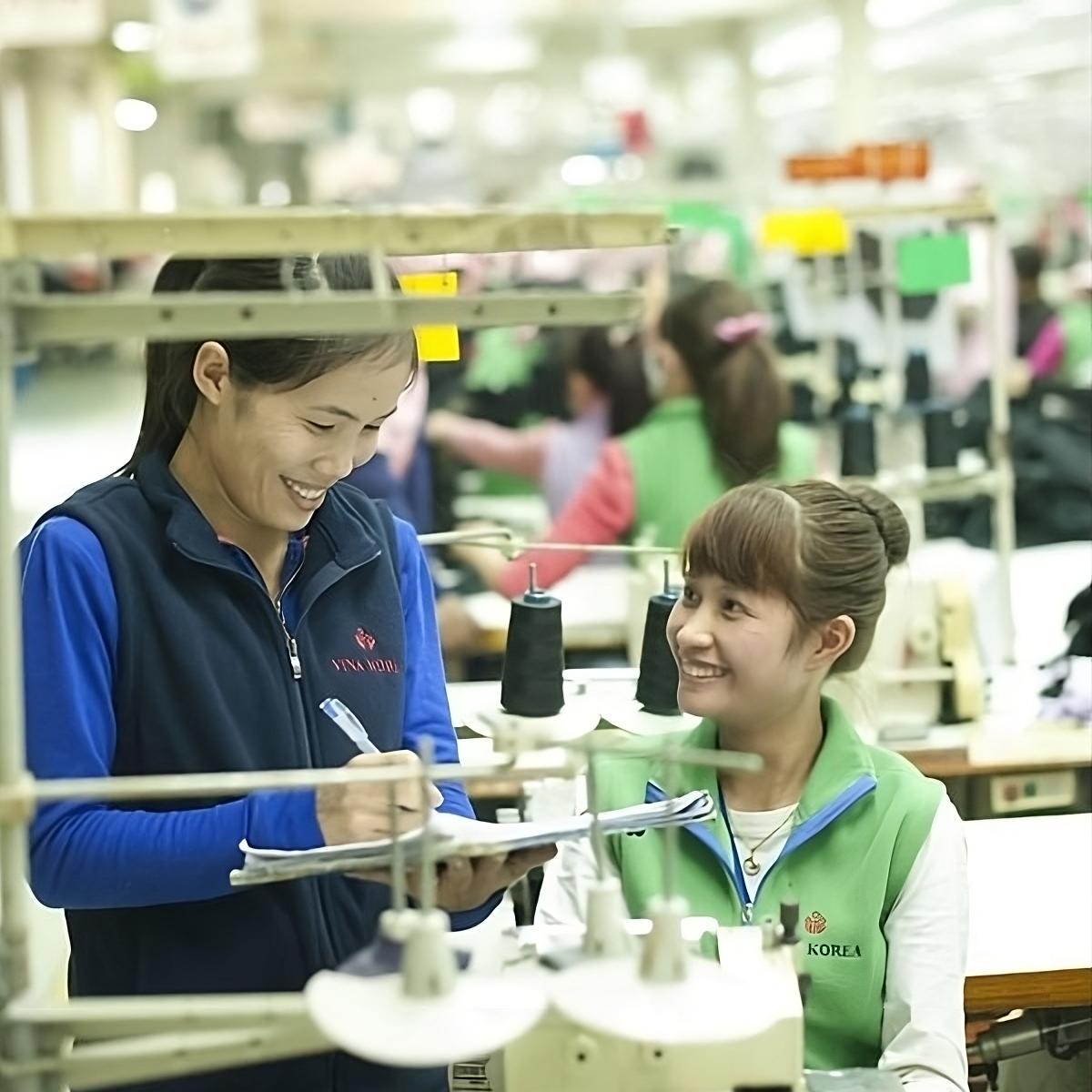
Women work two-thirds of the world's working hours, yet earn a mere 10 percent of the world's income and own less than 1 percent of the world's property. In developing countries, the garment industry is a leading employer of low-skilled female workers, second only to agriculture. Although 80 percent of garment workers are women, very few make it up the ladder to management positions.
"Many garment workers are coming from rural areas, and most do not recognize that there are opportunities to advance their careers," says Dotti Hatcher, executive director of Gap Inc.'s global P.A.C.E. program. "Many of them have very challenging lives and have many duties at home in addition to their work lives. There is a lot of data that will tell you that women in unskilled work in the developing world don’t have a belief in self, and it can be more difficult for them to obtain the knowledge they need to advance their careers."
Gap Inc.'s highly successful P.A.C.E. (Personal Advancement and Career Enhancement) program addresses this barrier and assists women in developing the foundational skills to advance in their personal lives and the workplace, in a collaborative, holistic and sustainable initiative. An investment in women has a ripple effect, proving also to be an investment in her family and her community. Gap Inc.'s P.A.C.E. program addresses time and stress management, general and reproductive health, communication, problem-solving and decision-making, and financial literacy.
From India to Cambodia, more than 25,000 women in the garment industry from seven countries have participated in this 65- to 80-hour workplace education initiative since it launched in 2007. P.A.C.E. is a collaboration between Gap Inc., factory owners, NGO partners and female garment workers, resulting in a program that addresses the interests of all the stakeholders. It is a voluntary program, both for the garment workers and the factory owners. The data regarding program results is impressive, as are the stories of the women touched by this initiative.
“I had an issue with my workload — I could not finish sewing on time," says a P.A.C.E. graduate from Cambodia. "But now the problem is resolved because I decided to talk to my line leader about it. Earlier I was not confident enough to discuss it with her, and so I kept working unhappily and left work late. I have routines now, and I use time more effectively. My wages have increased as a result of my improved work.”
Hatcher spoke of a woman who was profoundly touched by the P.A.C.E. program shortly after it was introduced in China.
An illiterate woman volunteered to participate before the program offered literacy training. Functional literacy is an important requirement for participants to reap the most benefit from the opportunity. Even though the woman wasn't in the class officially (because she was illiterate), she came to class every week and would stay after for extra help. She lived in a dormitory with other workers, and they also supported her in understanding the material. She later took literacy classes at night after working in the factory, so her literacy level increased significantly.
"This woman went on to complete the full [P.A.C.E.] training and since that point has become a mentor to other women in the factory," Hatcher says. "What I love most about this is that as an illiterate woman, she had the tenacity to come back and try because she knew [what] she was learning through the program was important and is now a mentor to other women."
The impact of the training is making a noticeable difference in the garment factories. "If you look at how this has changed the lives [of program graduates], we’re seeing workers who are being promoted or advancing in the factory three times as fast as the workers who haven’t gone through the P.A.C.E. program," Hatcher explains. "We’re seeing a change in the factories with supervisors that were all men just four, five or six years ago."
According to a study on Gap Inc.'s P.A.C.E. program by the International Center for Research on Women, graduates show a 49 percent increase in self-esteem, resulting in greater confidence in dealing with work and family situations, a more forward-thinking mindset, and an increased recognition of their self worth. Graduates showed a 150 percent increase in self-efficacy, demonstrating increased confidence in realizing goals or tasks at home and at work, and performing work more efficiently. The study also found a 119 percent increase in work-efficacy and a 100 percent increase workplace influence, boosting both the quality of work and productivity and improving relationships with co-workers and supervisors.
Many factory owners have also been enthusiastic about the results of Gap Inc.'s P.A.C.E. program, and the program is having a tangible benefit on the triple bottom line. "We are seeing that vendor operations are benefiting," Hatcher says. "Retention in the garment industry is typically very low. The vendor data is saying that the women who have gone through the PACE program are being retained longer. There is more loyalty to the vendor because they are giving the women learning opportunities that are needed in the workplace. The efficiency of the operation is being increased among women who have gone through the program, and they are more productive. This is a direct bottom-line impact to the vendor."
Gap Inc. has historically invested in the communities where it does business, both in the U.S. and internationally, but the creation of the P.A.C.E. program embodies a new approach. "We've built health clinics and contributed to the building of schools," Hatcher says. "The approach was to identify a need and support the funding of an initiative or program that addressed that need. This is all very good work, but over time it was not sustainable.
"We were looking at how we were investing and making it more closely aligned with our business interests, so it would be sustained over time. We wanted an initiative that could be implemented in the factory setting, that could be sustained by having vendors integrate it into their normal business practices, and address the specific needs of the women."
Although the social benefits of the P.A.C.E. program are priceless, the financial benefit for the company is much more difficult to calculate. "Even if you can change one person’s life, it is something you can’t put a dollar sign on," Hatcher says. "It is part of who we are as a company and is part of Gap Inc.'s DNA. It is great to work for a company that will invest this way and doesn't immediately look to us for the ROI."
Photo courtesy of Gap Inc.